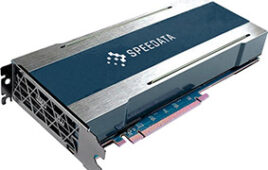Zinc finger nuclease, immunoprecipitation methods featured in Cold Spring Harbor Protocols
COLD SPRING HARBOR, N.Y. (Mon., Aug. 2, 2010) — Zinc finger nucleases (ZFNs) are artificial restriction enzymes made by fusing an engineered zinc finger DNA-binding domain to the DNA cleavage domain of a restriction enzyme. ZFNs can be used to generate targeted genomic deletions of large segments of DNA in a wide variety of cell types and organisms. In the August issue of the journal Cold Spring Harbor Protocols (http://cshprotocols.cshlp.org/TOCs/toc8_10.dtl), Jin-Soo Kim and colleagues (http://chem.snu.ac.kr/eng/Faculty/faculty_detail.asp?seqno=1015&link=faculty) present “Analysis of Targeted Chromosomal Deletions Induced by Zinc Finger Nucleases,” a detailed protocol for the detection and analysis of large genomic deletions in cultured cells introduced by the expression of ZFNs. The method described allows researchers to detect and estimate the frequency of ZFN-induced genomic deletions by simple PCR-based methods. This featured protocol is freely available on the journal’s website (http://cshprotocols.cshlp.org/cgi/content/full/2010/8/pdb.prot5477).
Immunoprecipitation is a commonly used technique for isolating and purifying a protein of interest. An antibody for the protein is incubated with a cell extract, and the resulting antibody/antigen complex is pulled out of solution. The method used for preparation of the cell extract can be critical for the experiment’s success. The choice of lysis conditions must be tailored to the nature of the epitope recognized by the immunoprecipitating antibody. “Lysis of Cultured Cells for Immunoprecipitation,” featured in the August issue of Cold Spring Harbor Protocols (http://cshprotocols.cshlp.org/TOCs/toc8_10.dtl), provides detailed instructions for the lysis of cells grown as monolayer cultures and cells grown in suspension. The protocol offers a detailed comparison between different commonly used lysis buffers and protease inhibitor cocktails, as well as a guide to preparing a general protease inhibitor cocktail. The article is freely available on the journal’s website (http://cshprotocols.cshlp.org/cgi/content/full/2010/8/pdb.prot5466).




